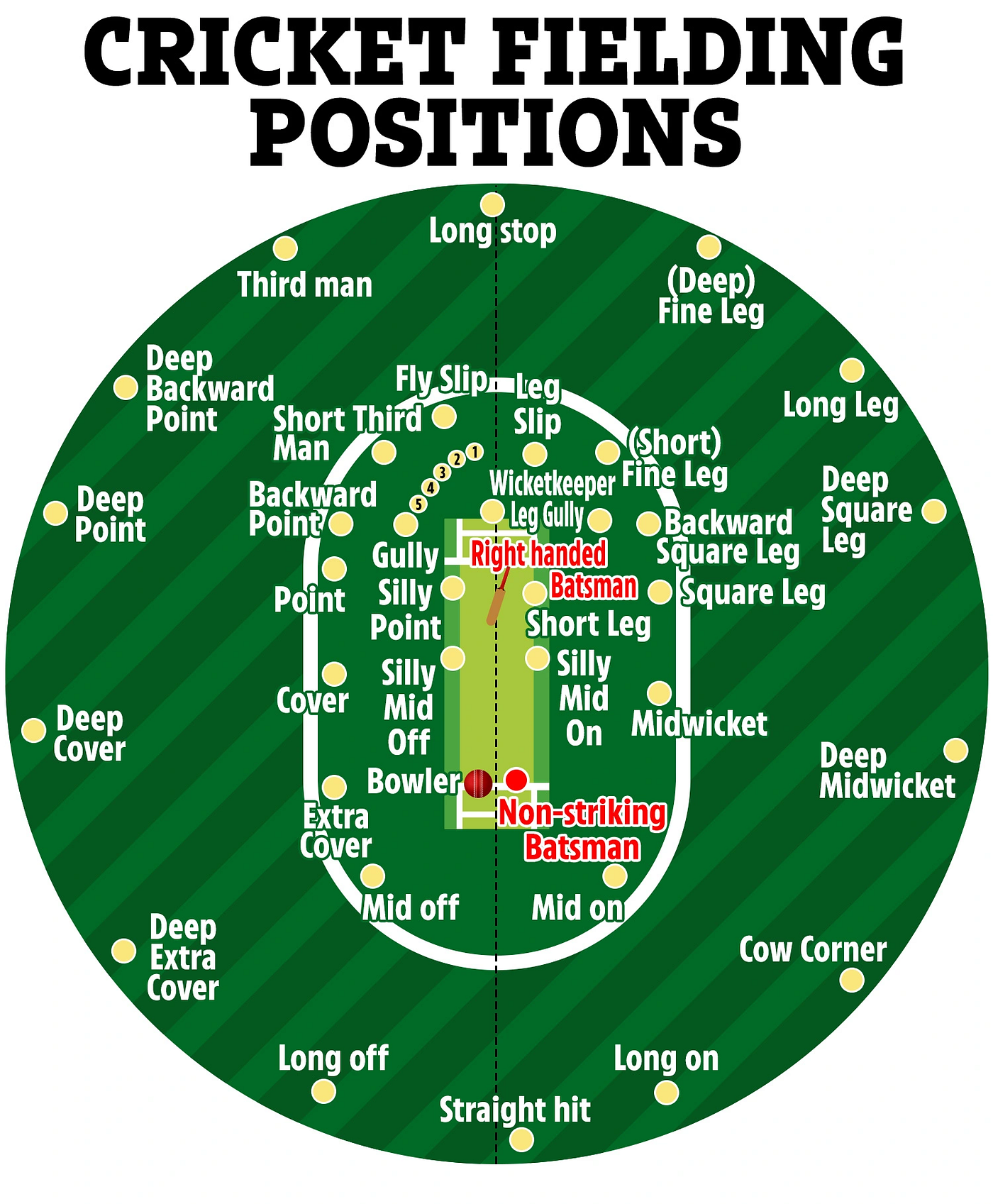How Many Power Play In T20

Cricket, particularly the thrilling T20 format, has garnered immense popularity worldwide for its fast-paced, dynamic gameplay. Within T20 matches, one of the pivotal phases is the Power Play, a segment that can significantly influence the course of the game. Understanding the nuances of Power Play in T20 cricket is essential for both seasoned enthusiasts and newcomers to the sport.
What is Power Play?
The Power Play in T20 cricket refers to the initial overs of a match when fielding restrictions are enforced, providing batsmen with an advantage to capitalize on scoring opportunities. This period typically spans the first six overs of each innings. During the Power Play, fielding teams are limited in the number of fielders they can place outside the 30-yard circle, enhancing the batsmen’s chances of hitting boundaries.
Evolution of Power Play Rules
The concept of Power Play has undergone several revisions since its inception. Initially, fielding restrictions were limited to just two players outside the circle during the first 15 overs. However, to introduce more excitement and balance between bat and ball, cricketing authorities introduced a separate Power Play period within the initial overs. Presently, the first six overs of each inning are designated as Power Play overs, ensuring a frenetic start to the game.
Strategies During Power Play
Power Play overs demand a strategic approach from both batting and bowling teams. For batting sides, the primary objective is to maximize scoring opportunities while minimizing the risk of losing wickets. Batsmen often adopt aggressive tactics, aiming to exploit the fielding restrictions by targeting boundaries through aggressive strokes.
Bowling teams, on the other hand, face the challenge of containing the opposition’s scoring rate during the Power Play. Bowlers must focus on maintaining a tight line and length while utilizing fielding placements to apply pressure on batsmen. Additionally, teams may deploy specialist bowlers who excel in swing, pace, or spin to disrupt the opposition’s momentum.
Impact on Match Dynamics
The outcome of Power Play overs can significantly influence the momentum and eventual result of a T20 match. A successful Power Play for the batting side can propel them to a commanding total, setting the stage for a formidable innings. Conversely, effective bowling and fielding performances during the Power Play can restrict the batting side’s scoring opportunities, providing the fielding team with a psychological advantage.
Moreover, the Power Play often sets the tone for the remainder of the innings, shaping the strategies and tactics employed by both teams. A strong start during the Power Play can embolden batsmen to accelerate their scoring rate, while early breakthroughs for the bowling side can dent the batting team’s confidence, leading to a more cautious approach.
Conclusion
In the fast-paced world of T20 cricket, the Power Play serves as a pivotal phase that sets the tone for the entire match. Its strategic significance lies in providing batsmen with a platform to launch aggressive assaults while testing the bowling side’s ability to contain runs and take wickets. Understanding the dynamics of Power Play overs is crucial for players, coaches, and spectators alike, as it encapsulates the essence of T20 cricket’s electrifying spectacle. As the sport continues to evolve, the Power Play remains a cornerstone of its excitement and unpredictability.
Demystifying Power Play Rules in T20 Cricket: An Insightful Overview

T20 cricket has revolutionized the game, injecting a dose of excitement, and pushing the boundaries of traditional cricketing norms. Among the many innovations introduced in this format, the concept of Power Play stands out as a strategic element that adds dynamism and intensity to the game. In this article, we delve into the intricacies of Power Play rules in T20 cricket, shedding light on its significance and impact on match dynamics.
Understanding Power Play
The Power Play in T20 cricket refers to a designated period within each innings where specific fielding restrictions are imposed to provide an advantage to the batting side. Typically, the Power Play consists of the first six overs of each innings, during which time the fielding team is compelled to position a limited number of fielders outside the 30-yard circle. This restriction aims to facilitate aggressive stroke play by the batsmen, encouraging high-scoring encounters and enhancing the entertainment value of the game.
Fielding Restrictions
During the Power Play overs, fielding teams are mandated to have a maximum of two fielders positioned outside the 30-yard circle. This limitation compels fielding captains to strategize meticulously, balancing the need to contain the opposition’s scoring with the risk of leaving gaps in the field that batsmen can exploit. The placement of fielders during the Power Play is crucial, with teams often deploying fielders at strategic positions to counter the aggressive intent of the batting side.
Tactical Considerations
For batting teams, the Power Play presents a golden opportunity to capitalize on fielding restrictions and amass a formidable total. Batsmen often adopt an aggressive approach during this phase, aiming to score boundaries and build momentum for the innings ahead. However, the risk of losing wickets remains ever-present, as aggressive shot-making can result in dismissals if not executed with precision.
On the contrary, bowling teams must devise astute strategies to mitigate the impact of the Power Play overs. Bowlers must focus on maintaining disciplined lines and lengths, exploiting any assistance offered by the pitch or atmospheric conditions. Additionally, fielding placements play a crucial role, with captains often opting for attacking fields to apply pressure on batsmen and induce mistakes.
Impact on Match Dynamics
The outcome of Power Play overs can significantly influence the trajectory of a T20 match. A dominant performance by the batting side during the Power Play can set the stage for a formidable total, placing the fielding team under immense pressure to mount a successful chase. Conversely, early breakthroughs for the bowling side can swing the momentum in their favor, stifling the opposition’s scoring and providing a platform for a comeback.
Conclusion
In the fast-paced world of T20 cricket, Power Play rules serve as a catalyst for excitement and drama, shaping the ebb and flow of matches. Its strategic importance lies in providing both batting and bowling teams with opportunities to seize momentum and gain ascendancy. As T20 cricket continues to captivate audiences worldwide, the Power Play remains a crucial component that epitomizes the format’s thrilling and unpredictable nature. Understanding and mastering the nuances of Power Play rules are essential for players, coaches, and fans alike, as they navigate the intricacies of this exhilarating form of the game.
Dominators of the Power Play: Top Players in T20 Cricket
In the fast-paced and adrenaline-fueled arena of T20 cricket, the Power Play overs often serve as a battleground where players showcase their prowess and dominance. These initial six overs of each innings are crucial, setting the tone for the rest of the match and providing an opportunity for batsmen to assert their authority or for bowlers to make breakthroughs. Here, we explore some of the top players who have left an indelible mark on T20 cricket through their exceptional performances during the Power Play.
1. Chris Gayle
Known as the “Universe Boss,” Chris Gayle is synonymous with explosive batting in T20 cricket. With his towering sixes and blistering stroke play, Gayle has terrorized bowlers during the Power Play overs. His ability to dispatch even the most formidable bowlers to all parts of the ground has made him a nightmare for opposition teams during this phase of the game.

2. David Warner
Australian cricketer David Warner’s aggressive style of play perfectly complements the requirements of the Power Play overs. Renowned for his swift footwork and impeccable timing, Warner has consistently provided flying starts to his teams in T20 cricket. His ability to find the gaps and pierce the field during the fielding restrictions makes him a potent force during the Power Play.

3. Rohit Sharma
As the vice-captain of the Indian cricket team and a stalwart in the Mumbai Indians franchise, Rohit Sharma is renowned for his elegant yet authoritative batting. Sharma’s impeccable timing and ability to pick gaps in the field make him a formidable opponent during the Power Play overs. His penchant for converting good starts into match-winning innings has cemented his reputation as one of the best in the business.

4. Aaron Finch
Australian opener Aaron Finch is another player who thrives in the Power Play overs of T20 cricket. Armed with a wide array of strokes and a fearless approach, Finch has the ability to dismantle bowling attacks right from the outset. His aggressive intent and ability to find boundaries consistently make him a valuable asset for any team during the Power Play.

5. Sunil Narine
While batsmen often hog the limelight during the Power Play overs, spinners like Sunil Narine have also made a significant impact in T20 cricket. The West Indian spinner is known for his miserly economy rate and knack for picking up crucial wickets during the fielding restrictions. Narine’s ability to contain runs and create pressure on opposition batsmen makes him a valuable weapon for his team during the Power Play.

Conclusion
The Power Play overs in T20 cricket provide a platform for players to exhibit their skills and influence the outcome of the match. Whether it’s explosive batting or cunning bowling, the top players in T20 cricket have mastered the art of making their presence felt during this crucial phase of the game. As the format continues to evolve, the significance of dominant performances during the Power Play only grows, reaffirming its status as a cornerstone of T20 cricket’s electrifying spectacle.
FAQs




